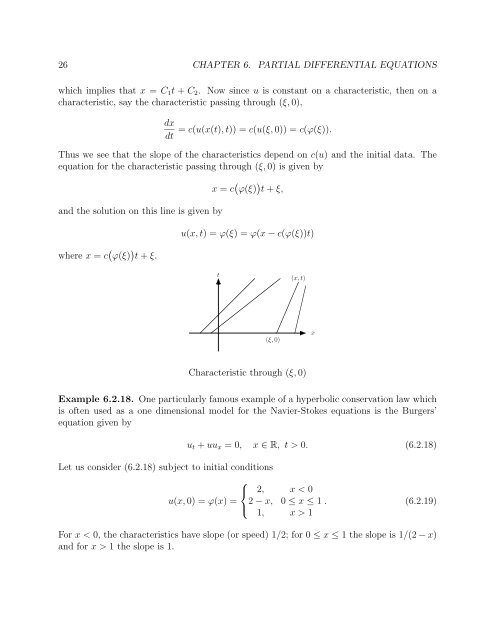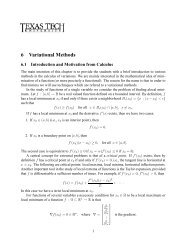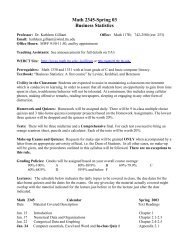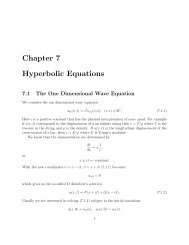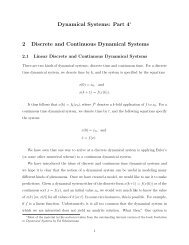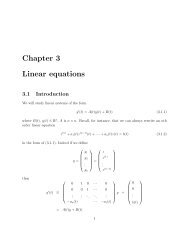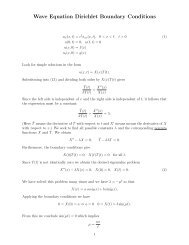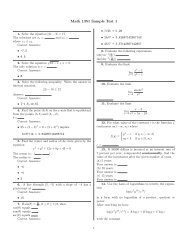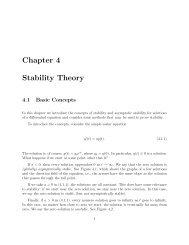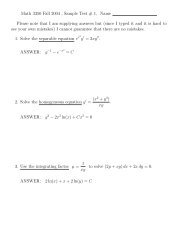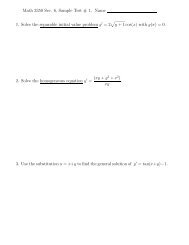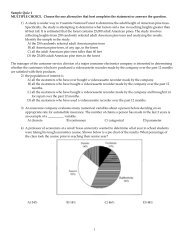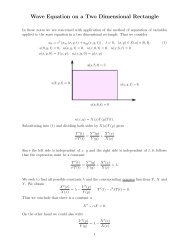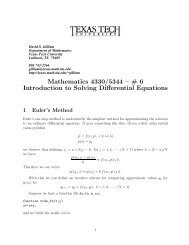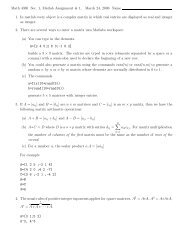Chapter 6 Partial Differential Equations
Chapter 6 Partial Differential Equations
Chapter 6 Partial Differential Equations
Create successful ePaper yourself
Turn your PDF publications into a flip-book with our unique Google optimized e-Paper software.
26 CHAPTER 6. PARTIAL DIFFERENTIAL EQUATIONS<br />
which implies that x = C 1 t + C 2 . Now since u is constant on a characteristic, then on a<br />
characteristic, say the characteristic passing through (ξ,0),<br />
dx<br />
dt<br />
= c(u(x(t),t)) = c(u(ξ,0)) = c(ϕ(ξ)).<br />
Thus we see that the slope of the characteristics depend on c(u) and the initial data. The<br />
equation for the characteristic passing through (ξ,0) is given by<br />
and the solution on this line is given by<br />
where x = c ( ϕ(ξ) ) t + ξ.<br />
x = c ( ϕ(ξ) ) t + ξ,<br />
u(x, t) =ϕ(ξ) =ϕ(x − c(ϕ(ξ))t)<br />
t<br />
(x, t)<br />
(ξ,0)<br />
x<br />
Characteristic through (ξ,0)<br />
Example 6.2.18. One particularly famous example of a hyperbolic conservation law which<br />
is often used as a one dimensional model for the Navier-Stokes equations is the Burgers’<br />
equation given by<br />
Let us consider (6.2.18) subject to initial conditions<br />
u t + uu x =0, x ∈ R, t>0. (6.2.18)<br />
⎧<br />
⎨ 2, x < 0<br />
u(x, 0) = ϕ(x) = 2 − x, 0 ≤ x ≤ 1 . (6.2.19)<br />
⎩<br />
1, x > 1<br />
For x1 the slope is 1.


